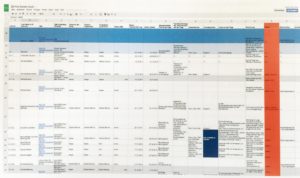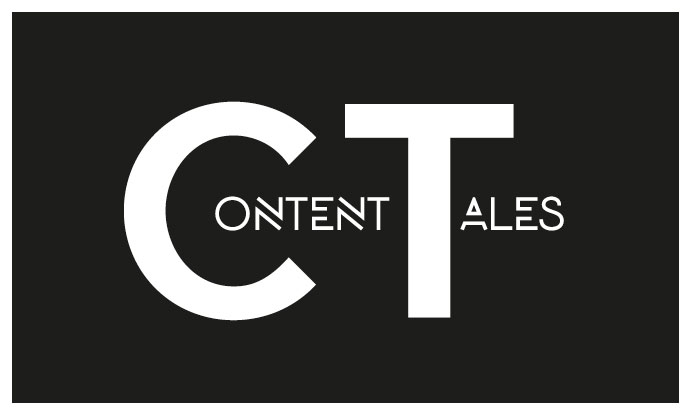READING TIME: 6 MINUTES
It’s probably the most powerful content strategic tool available: the content audit. No matter what you want to improve on your website, analysing your current content situation is key for extracting potential optimization measures. Knowing which content your website has, where it lives and who’s in charge of it, belongs to the basic responsibilities of a content manager and content strategist. Read on and learn about the importance and application of content audits. I’m also going to provide you with hands-on hints and tricks. Let’s go.
Content audits have this image of being unpleasant, time consuming and boring. So why should we spend our valuable time with analyzing every single pixel of our website? Here are 10 good reasons for conducting a content audit:
10 reasons for a content audit
- Identify content that is neither relevant for your organization nor for users – remove it
- Identify bad performing content and improve it (f.e. SEO, usability, conversion optimization etc.)
- Gain data in order to scope and budget a website relaunch or another big web project
- Asses the size of your website with all it’s content formats and elements
- Learn how your website is structured
- Benchmark own content with competitor’s content
- Find out if the most important contents suit your user’s needs – identify content gaps
- Check if your content is conform with your brand’s voice & tone and message architecture
- Identify which content contributes to your business goals most
- Simply get to know your website
Content audits are usually conducted, when a website gets redesigned (fully or partly) or migrated. As we learned that there are so many good reasons for running a content audit, the time to start with it is always right. There are organziations which even implemented rolling audits in their daily tasks. Content strategist Carrie Hane Dennison once stated that every 5 hours spend with early content auditing may save 20 hours at a later project stage. I think she’s right, because content audits also help to avoid doing the wrong things. You see: There’s always a reason for a content audit. It’s key for establishing a content controlling culture, which ultimately boosts your website’s performance.
Content audit – structure and types
The following sentence is probably the most important one in this whole article: Every content audit is different, it’s structure depends on your desired learnings and the business goals you’d like to achieve. There is no ultimate format or template, an ideal scope or something else. Be very specific when listing the goals of your content audit. Think also about to whom you need to report outcomes and what this person expects to see from you. There is just one basic formula for your spreadsheet: Put selected attributes in columns and the different website pages in the rows.

As this is article is about guiding you through the content audit process, we’ll of course discuss how to properly set up an audit. But let’s distinguish between two major content audit types first.
Quantitative content audit / content inventory
This kind of audit is about objective facts. It’s basically a list of pages, which contains information regarding where, which content lives, how big pages are (and other quantitative data). A quantitative content audit may contain:
Attributes of a quantitative content assessment
- Hierarchical level (1 | 2.1 | 2.1.1| 2.1.1.1)
- ID (it’s important to have an identification number assigned to each page)
- H1 / page title
- URL
- Format (html, video, photo, pdf etc.)
- Page size
- Load time
- Content owner (creator, writer)
- Number of words / characters
- Search query type (informational, transactional, commercial investigation, navigational query)
- Main keywords (for SEO optimization)
- Duplicate content and canonical tags
- Alt tags (for pictures)
- KPIs (sessions, avg. visit duration, bounces, conversion rate etc.)
- CTA / type of CTA
- Outbound and inbound links
- Last revision date
- Language / localization
- HTTP errors (404, 500)
- Redirects (301)
Qualitative content audit
A qualitative content assessment is usually done after a quantitative content audit. It analyzes content with regard to its quality, structure, voice & tone (appropriateness) and usefulness. As Kristina Halvorson and Melissa Rach state in their book “Content Strategy For The Web“: “The key distinction between quantitative inventories and qualitative audits is human judgement. Qualitative content audits are a robot-free zone”. Due to the fact that qualitative audits are conducted by humans, make sure you define absolutely clear rating parameters (especially if more than one person analyzes content).
The two experts distinguish between two types of qualitative content assessments: a “best practice assessment” and a “strategic assessment”. While the latter is a comprehensive content analysis, which aligns your content with relevant business goals, the first one is about measuring content against industry best practices. Below there are again some sample attributes, which you might include into your qualitative content audit. Be careful though: less is more. Choose attributes based on your goals and desired learnings.
Attributes of a qualitative assessment
- Text structure (is there a catchy H1, are there subheadings, enough paragraphs, bullet points, tables etc.?)
- Readability (are texts easy to read and understand?)
- Conformity with brand voice (does content meet defined message architectures?)
- Targeted personas (to which of your personas does the content refer?)
- Findability (how do users find a certain content piece?)
- Alignment with business goals (to which defined business goals does a page contribute?)
- “Up-to-dateness” (is content up to date or outdated?)
- Balance of content formats (is the ratio of video, photo and text content appropriate?)
- Uniqueness (is content similar to content of another page – is it redundant?)
- “Shareability” (is content ready to be shared)
Apart from the above listed attributes, make sure that your content audit spreadsheet contains two further columns: “notes” and “recommendations”. There might be things an auditor wants to document, which you haven’t considered during the template setup. In addition to that it’s important to state what should happen with a specific page. Therefor it makes sense to add a section with recommendations. Possible attributes could be: “revise”, “remove”, “analyse more closely”, “leave as is”.
The process of conducting a content audit
The following section of this article focuses on providing you with a holistic workflow to conduct a content audit. It’s a mixture of own experiences as well as recommendations from many different content strategy experts like Miriam Löffler, Kristina Halvorson & Melissa Rach and Meghan Casey.
Preperation
- Analyze pain points and define goals (answer why you want to realize a content audit – make sure to have S.M.A.R.T. goals)
- Stakeholder analysis (which departments and employees will be affected by a content audit – inform and include them)
- Scope the project (specify audit type (quantitative, qualitative), scope (partly, fully), and if it’s about benchmarking or strategic alignment)
- Define responsibilities (project leader, auditors, developers in charge, back-end experts etc.)
- Define milestones and schedule the project
- Set up budget & cost tracking
Setup
- Decide over documentation (Excel, Google spreadsheet, content inventory tools)
- Specify the attributes you’d like to look at (see lists above)
- Choose necessary tools (page crawler, SEO tools, Google Analytics data, Search Console data etc.)
- Define rating criteria for every attribute (if rating is necessary, f.e. conformity with brand voice and readability rated from 1-6, bounce rate rated with low/average/high etc.)
- Weight the importance of different attributes (some are more relevant than others, which are your top 3 or 5)
- Assign auditors to certain sets of attributes (reduce the number of different people looking at the same qualitative attributes in order to ensure consistency and objective ratings)
Execution
- Quantitative Content Audit
- Crawl your website (using a crawling tool like f.e. Screaming Frog)
- Fill your spreadsheet with data from your tools
- Remove errors from data import
- Start with the qualitative assessment after finishing with the quantitative inventory
- Qualitative Content Audit
- Rate the content according to the the attributes and parameters you’ve specified
- Draw samples from every auditor in order to ensure everybody is aligned and does a good job
- Check if you’re within time and budget limitations
- Finalize (there must not be one single empty cell in your spreadsheet, mark it with n.a. if necessary)
Interpretation
- Analyse results based on the specified goals
- Extract optimization measures and specify a desired future state
- Give recommendations how to achieve the desired future state
- Compile your findings to different reports (choose whom you provide with which report)
- Make a presentation and share findings and next steps
There is so much more to say about the usage of a finalized content audit. With the last point of the described process “interpretation”, I just wanted to give a short outline, on how to make sure the compiled data is used. I’m going to write a separate article covering the interpretation / analysis stage after conducting a content audit. You don’t want to miss this post? Feel free to subscribe to my newsletter below. If you have any questions on content audits, please drop me a comment or write me on social media. Here’s my LinkedIn profile.
Sources:
Halvorson, K., & Rach, M. (2012). Content Strategy for the Web (2nd Edition) (2nd ed.). Berkeley, CA: New Riders Publishing.
Löffler, M. (2014). Think Content! : Grundlagen und Strategien für erfolgreiches Content-Marketing (1st ed.). Galileo Press.
Casey, M. (2015). The content strategy Toolkit: Methods, Guidelines, and Templates for Getting Content Right. San Francisco, California: New Rieders.




Be First to Comment